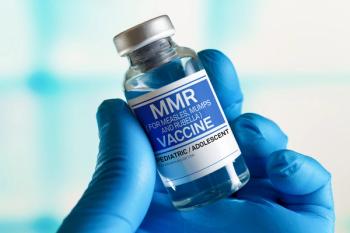
Statin Guidelines Lead to Treatment Disparities
US Preventive Services Task Force and American College of Cardiology/American Heart Association change statin eligibility.
Differing statin guidelines were found to lead to varying numbers of patients starting treatment, which could lead to significant cardiovascular disease risks among ineligible patients who may benefit from the treatment.
A new study published by JAMA indicated that less patients could receive treatment with statins if physicians adhere to the 2016 US Preventive Services Task Force (USPSTF) recommendations over the 2013 American College of Cardiology/American Heart Association (ACC/AHA) guidelines.
The ACC/AHA guidelines base statin recommendations on a 10-year risk of atherosclerotic cardiovascular disease (ASCVD), while the USPSTF recommendations raised the ASCVD risk threshold, requiring patients to present at least 1 risk factor, such as hypertension, diabetes, dyslipidemia, or smoking.
The authors gathered data from the National Health and Nutrition Examination Survey from 2009 to 2014 to determine statin eligibility under each set of guidelines. Included in the study were 3416 patients aged 40 to 75 with fasting lipid data and triglyceride levels of 400-mg/dl or less. No patients presented prior heart disease at baseline.
If fully implemented, the USPSTF recommendations would lead to an uptake of statins among 16% of adults without prior heart disease and 22% of those already treated with lipid-lowering drugs, according to the study.
However, the ACC/AHA guidelines would increase statin initiation by 24%. The authors discovered that 8.9% of patients eligible for statin therapy under these guidelines would not be eligible under USPSTF recommendations.
More than half of patients eligible under the older guidelines, but ineligible under the new recommendations, would be aged 40 to 59 who have an average 30-year cardiovascular risk of more than 30%, according to the study. Additionally, 28% of these patients would have
"If these estimates are accurate and assuming these proportions can be projected to the U.S. population, there could be an estimated 17.1 million vs 26.4 million US adults with a new recommendation for statin therapy, based on the USPSTF recommendations vs the ACC/AHA guideline recommendations, respectively -- an estimated difference of 9.3 million individuals," the authors wrote.
Although the newer recommendations may include more criteria, the authors suggest that the ACC/AHA guidelines may be more beneficial for at-risk patients, including older patients with diabetes.
Due to the discrepancies between the 2 recommendations, patients with similar risk factors may be receiving differing treatments. Physicians should take all factors into account when deciding how to reduce the risk of cardiovascular disease among patients. Additional research is needed to determine the most accurate parameters for statin eligibility, according to the study.
"Alternative approaches to augmenting risk-based cholesterol guidelines, including those that explicitly incorporate potential benefit of therapy, should be considered,” the authors concluded.
Newsletter
Stay informed on drug updates, treatment guidelines, and pharmacy practice trends—subscribe to Pharmacy Times for weekly clinical insights.














































































































































































































